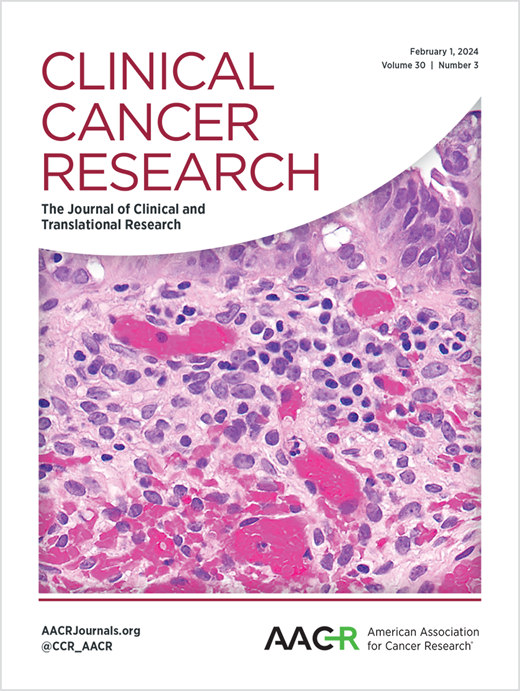针对新诊断的ER阳性、HER2阴性早期乳腺癌的口服SERD--依仑司群的术前机会窗口研究:EMBER-2研究的结果。
IF 10
1区 医学
Q1 ONCOLOGY
引用次数: 0
摘要
目的:伊曲司群是一种口服SERD,对ABC患者具有良好的安全性和初步疗效。PD生物标志物数据可以优化药物剂量;以下是EMBER-2研究的PD数据。研究方法对未经治疗、可手术的ER阳性、HER2阴性EBC绝经后妇女进行随机分组,在手术前2周左右每天服用400毫克与800毫克依仑司群。后来又增加了一个每天测试 200 毫克的单臂。在配对肿瘤样本(治疗前/后)中评估了PD生物标志物的变化(IHC检测ER、PR、Ki-67和ER相关基因的mRNA表达)。此外,还对安全性和 PK 进行了评估。结果在可评估的配对样本(75 个样本)中,400 毫克和 800 毫克剂量之间的ER靶向性一致,400 毫克剂量的毒性较小。虽然 200 毫克剂量诱导的 CCCA 发生率最低,但其 PD 和 PK 结果相似。结论EMBER-2与现有的1期数据相结合,确定了400毫克为imlunestrant的最佳剂量。本文章由计算机程序翻译,如有差异,请以英文原文为准。
A preoperative window-of-opportunity study of oral SERD, imlunestrant, in newly diagnosed ER-positive, HER2-negative early breast cancer: Results from EMBER-2 Study.
Purpose: Imlunestrant is an oral SERD with favorable safety and preliminary efficacy in patients with ABC. PD biomarker data can optimize drug dosing; herein is the PD data from the EMBER-2 study. Methods: Postmenopausal women with untreated, operable ER-positive, HER2-negative EBC were randomized to 400mg vs 800mg of imlunestrant daily for ~2 weeks before surgery. A single arm testing 200mg daily was later accrued. PD biomarker changes (ER, PR, Ki-67 by IHC, and mRNA expression of ER-related genes) were evaluated in paired tumor samples (pre-/ post-treatment). Safety and PK were also assessed. Results: Among evaluable paired samples (n=75), PD profiles demonstrated consistent ER targeting between 400 and 800mg doses with less toxicity at the 400mg dose. Although inducing the lowest rate of CCCA, PD and PK results were similar for the 200mg dose. Conclusion: EMBER-2 combined with existing phase 1 data has identified 400mg as the optimal imlunestrant dose.
求助全文
通过发布文献求助,成功后即可免费获取论文全文。
去求助
来源期刊

Clinical Cancer Research
医学-肿瘤学
CiteScore
20.10
自引率
1.70%
发文量
1207
审稿时长
2.1 months
期刊介绍:
Clinical Cancer Research is a journal focusing on groundbreaking research in cancer, specifically in the areas where the laboratory and the clinic intersect. Our primary interest lies in clinical trials that investigate novel treatments, accompanied by research on pharmacology, molecular alterations, and biomarkers that can predict response or resistance to these treatments. Furthermore, we prioritize laboratory and animal studies that explore new drugs and targeted agents with the potential to advance to clinical trials. We also encourage research on targetable mechanisms of cancer development, progression, and metastasis.
 求助内容:
求助内容: 应助结果提醒方式:
应助结果提醒方式:


